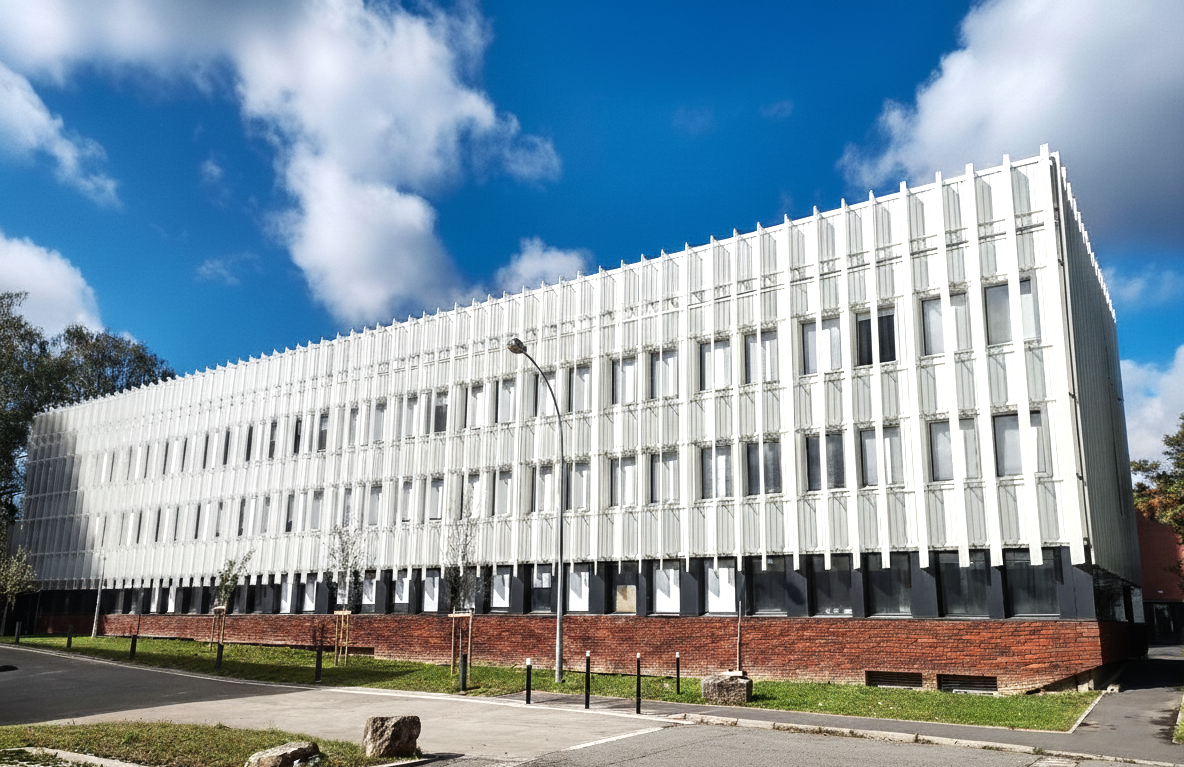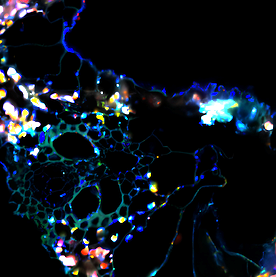LASIRE

UMR 8516 – CNRS & University of Lille
LASIRE, Advanced Laboratory for Spectroscopy of Interactions, Reactivity and Environment
About our laboratories
LASIRE is a joint research unit of the CNRS and the University of Lille whose main field of application is the study of complex physico-chemical systems by molecular spectroscopic, analytical, and advanced modeling methods. Our laboratory combines cutting-edge analytical techniques with theoretical chemistry to understand how molecules interact, react, and affect the environment. We host several high-tech spectroscopy systems that provide advanced analytical capabilities, including Raman, infrared, UV-visible, luminescence, EPR, and NMR spectroscopy.
Groups

LASIRE comprises several complementary research groups:
- Dynamics, Nanoscopy & Chemometrics (DyNaChem): Micro- and nano-imaging of photoactive bio-systems; super-resolution fluorescence and expansion microscopy; development of advanced instruments and chemometric pipelines for hyperspectral imaging (e.g., the DEEPSEE initiative).
- Environmental Physical Chemistry (PCE): Fundamental physico-chemical processes in natural environments, from the origin and fate of contaminants (water, sediments, aerosols) to new observation tools, water-treatment processes, and modeling of impacts linked to global change.
- Magneto-Structural Properties of Materials (PMSM): Magneto-structural characterization of materials using magnetic spectroscopies (EPR, NMR) and related methods; topics span biomaterials, catalytic/photocatalytic systems, and functional solids, supported by a dedicated EPR platform (X/Q-band and imaging).
- Photodynamics, Confinement, Solvation (PCS): Photoreactivity and dynamics in condensed phases: reaction mechanisms, solvation and confinement effects, and host–guest systems in microporous matrices; team leadership and work connect strongly to ultrafast phenomena.
Meet DyNaChem
DyNaChem (Dynamics, Nanoscopy & Chemometrics) is LASIRE's team dedicated to chemometrics, data science in spectroscopy, micro- and nano-imaging of molecules, proteins, light-emitting organic/hybrid nanoparticles and light-active biological systems. Beyond cutting-edge research, the group actively promotes open science and collaborative tool sharing.
Their work spans from creating innovative chemometric tools and data analysis methods to developing advanced super-resolution imaging techniques for studying biological systems.
We develop new instrumentation and analysis pipelines to capture ultrafast processes down to the nanometer scale, with a strong focus on knowledge transfer and open science.

Key Team Members
- Cyril Ruckebusch – Professor & Team Leader — ORCID
- Ludovic Duponchel – Professor — ORCID
- Michel Sliwa – CNRS Research Director — ORCID
- Raffaele Vitale – Assistant Professor — ORCID
- Olivier Devos – Assistant Professor — ORCID
- Aude Bouchet – Assistant Professor — ORCID
- Jean-Emmanuel Clement – Assistant Professor — ORCID not available
Projects
- DEEPSEE projectInternational Chair, KU Leuven ISITE ULNE — High-performance 3D bioimaging.
- ANR PRC AISLEANR-23-CE42-0023 — Advanced Imaging of Strategic Light Elements.
- ANR PRC DIAGEMANR-20-CE17-0021 — Medical diagnosis by artificial intelligence applied to LIBS elemental microscopy.
- ANR PRC ImaginANR-21-CE29-0007 — Active molecular imaging and unmixing.
- ANR PRC MESOMORPHICSANR-20-CE06-0021 — POM-based hybrid materials for photonics.
- ANR PRC DynOCPANR-18-CE11-0005 — Time-resolved insights into the photo-activation mechanism of OCP by ultrafast spectroscopy and serial femtosecond crystallography.
- IRP Nanosynergetics2France–Japan — Photo-active nanomaterials with cooperative and synergistic responses.
- KAKENHIOsaka University — Super-resolved nanometer-scale imaging of energy transfer in organic solids using upconversion nanoparticles as nanometric excitation sources.
Recent relevant scientific publications (2024–2025)
- Essential spectra to improve vibrational imaging of pharmaceutical samplesCoic, Laureen, et al. — Microchemical Journal 209: 112751 (2025). DOI: 10.1016/j.microc.2025.112751
- Large language models (such as ChatGPT) as tools for machine learning-based data insights in analytical chemistryDuponchel, Ludovic, Rodrigo Rocha de Oliveira, and Vincent Motto-Ros. — Analytical Chemistry 97.13: 6956–6961 (2025). DOI: 10.1021/acs.analchem.4c05046
- Three-Way Data Reduction Based on Essential InformationVitale, Raffaele, et al. — Journal of Chemometrics 38.12: e3617 (2024). DOI: 10.1002/cem.3617
DyNaChem's commitment to Lovelace's Square
DyNaChem actively collaborates with Lovelace's Square in promoting open science by sharing data analysis software and datasets relevant to chemometrics, in support of the platform's open science initiatives.
Our collaboration with Lovelace's Square focuses on making our cutting-edge data analysis techniques openly available to build a more accessible research community and help democratize scientific knowledge. This includes open-access tools such as multivariate curve resolution techniques, essential information-based compression algorithms, and hyperspectral analysis methods.
This collaboration aligns with European Union standards for open science, knowledge valorization, and responsible research and innovation (RRI). It reflects our commitment to the principles of the European Research Area (ERA), particularly in fostering transdisciplinary cooperation, data sharing, and open innovation, contributing to a more inclusive and interoperable research ecosystem. We support the broader EU vision of making scientific knowledge freely accessible, reusable, and impactful across borders.


